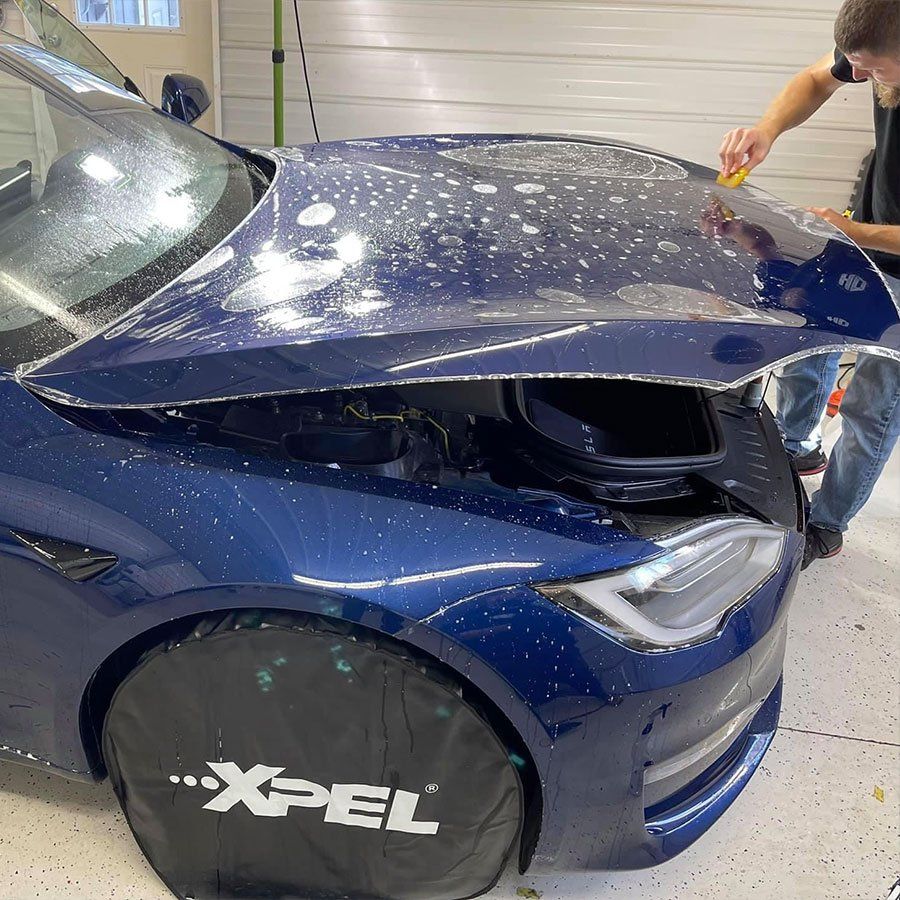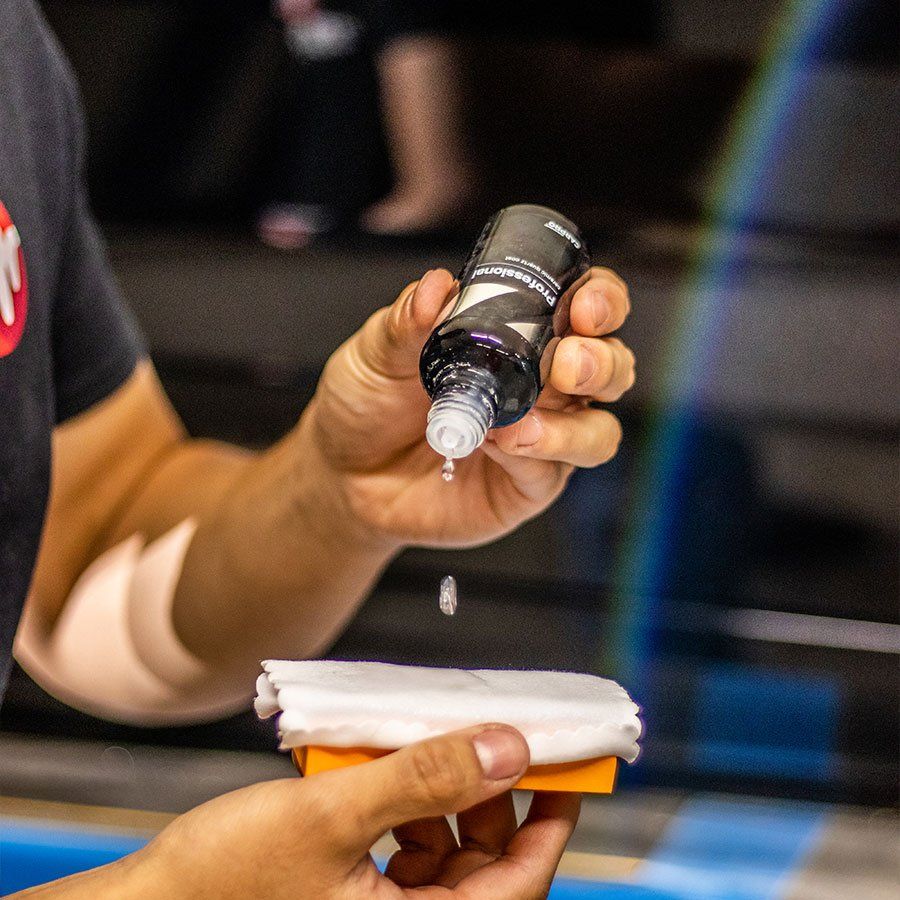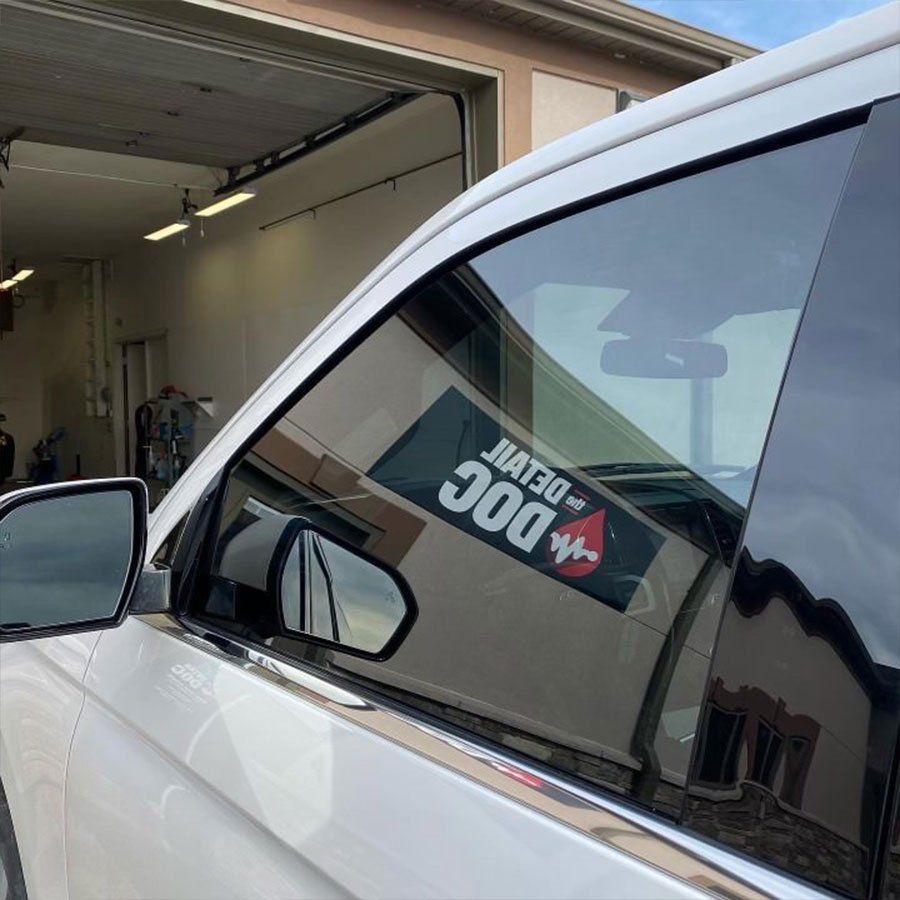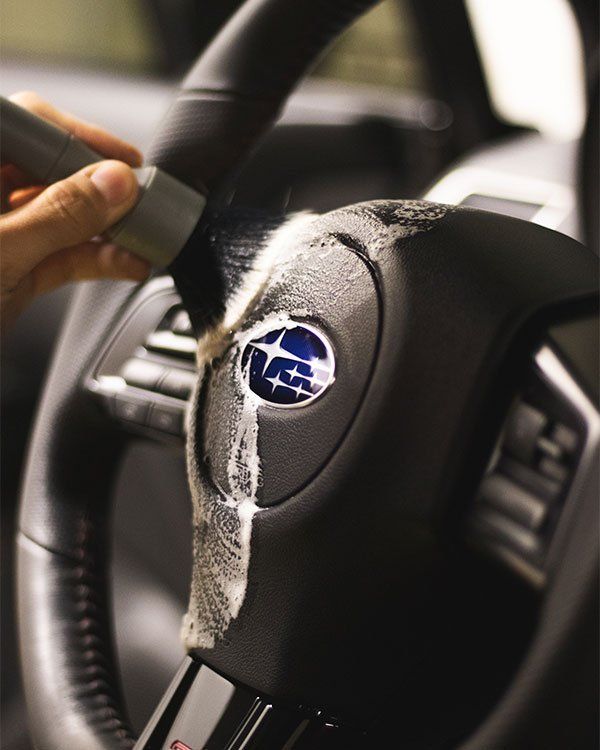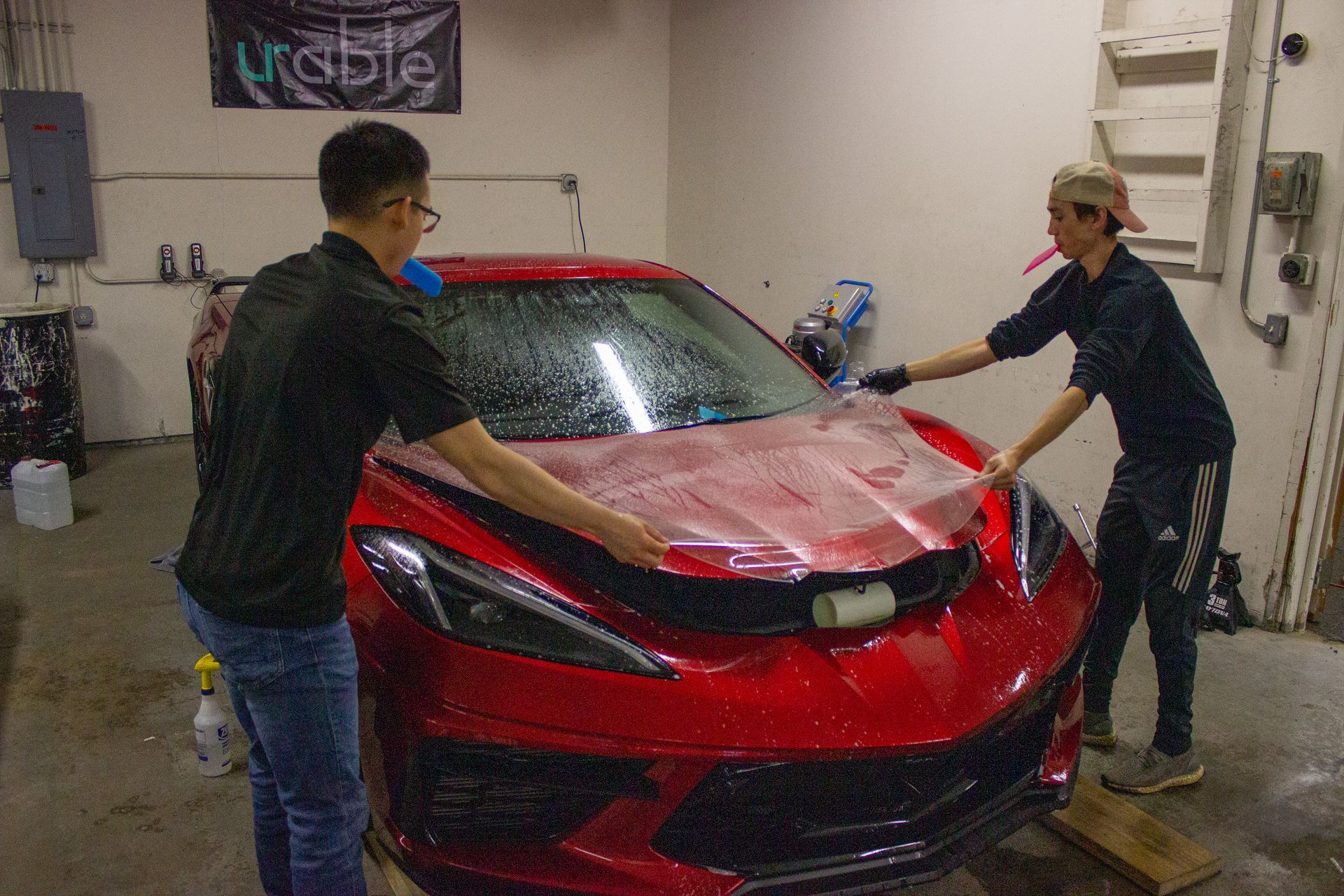The Detail Doc Blog
Ceramic Coating vs. Sealant: Which Is The Best for Car Protection?
(989) 244-0505 GET SCHEDULED NOWCeramic coatings and sealants both provide protection for your car but in different ways. With a ceramic coating, you get a long-lasting protective layer that bonds with the car's original paint, making it resilient against environmental hazards for years. Sealants do offer protection too, but they sit on the paintwork, forming a temporary barrier and only serve for a few months. Whereas ceramic coatings have the added bonus of creating a slick, glossy finish that causes water droplets to roll off easily—something sealants can't maintain over time. Now, let's dive deeper into these differences.
Ceramic coatings offer superior durability, heat resistance, and longevity, lasting up to 3 years or more, while providing better protection against oxidation and corrosion compared to paint sealants. On the other hand, paint sealants provide affordable and effective short-term protection from harmful elements like UV rays and bird droppings.
Ceramic Coating vs. Sealant: Key Differences
The main distinction between ceramic coatings and sealants lies in their composition and longevity. Ceramic coatings are made of liquid polymers that chemically bond with the car's factory paint, creating a long-lasting layer of protection against various environmental hazards. In contrast, sealants are synthetic products designed to offer temporary shielding against elements such as UV rays, bird droppings, and road grime.
One significant difference is the durability and lifespan of these two products. Ceramic coatings are known for their longevity and can last for multiple years with proper maintenance, while sealants have a much shorter lifespan, typically lasting for a few months before needing reapplication.
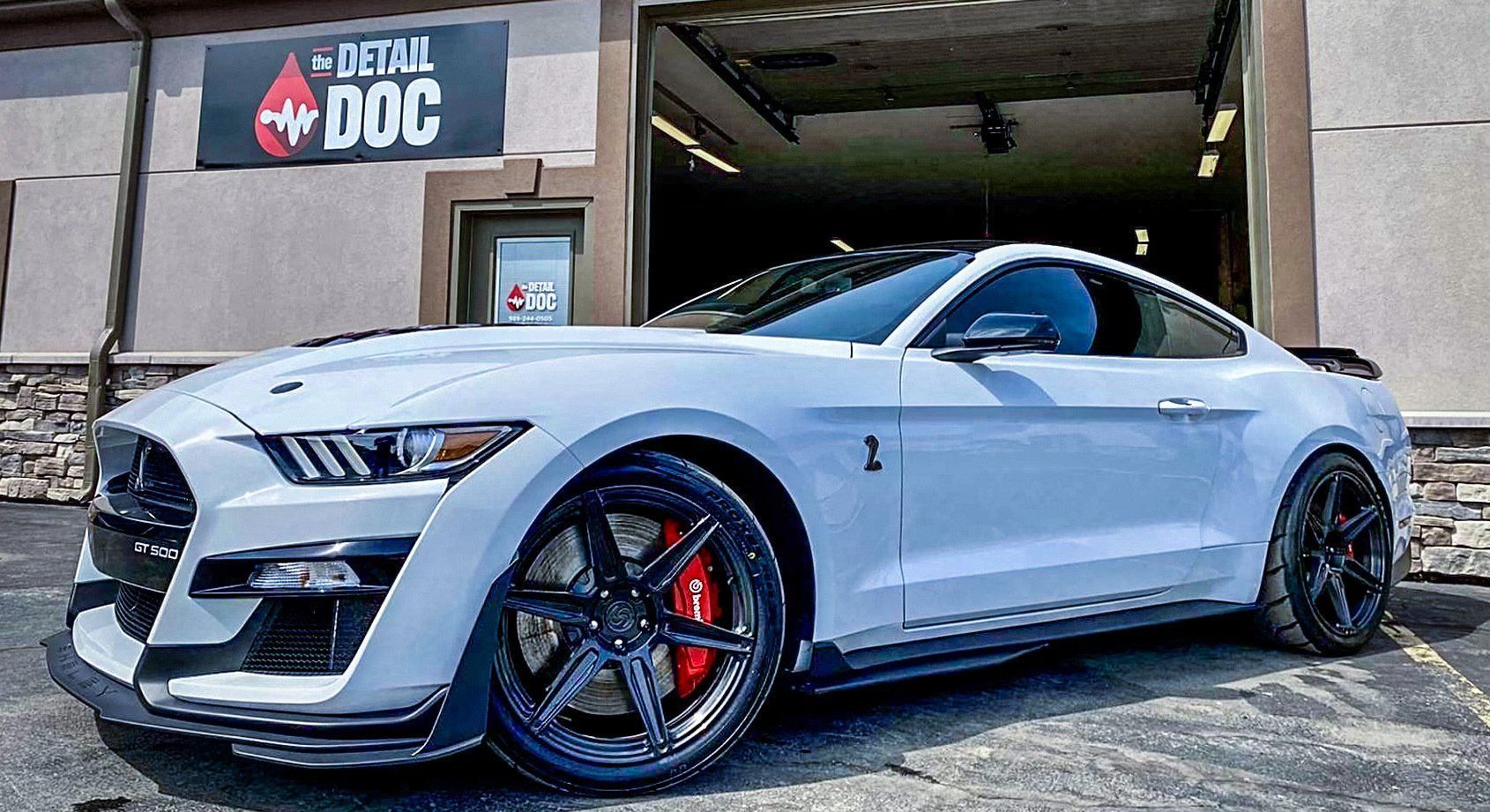
Durability
Both ceramic coatings and sealants offer protection from common sources of damage, like UV rays, bird droppings, and road debris. However, the durability of ceramic coatings far exceeds that of sealants. Ceramic coatings provide more effective protection against oxidation and corrosion compared to sealants due to their robust chemical composition.
Moreover, when exposed to heat, ceramic coatings demonstrate better resistance and longevity, making them an ideal choice for vehicles subject to harsh environmental conditions. While both coatings offer protection against heat damage and abrasive particles, ceramic coatings can withstand higher temperatures compared to sealants.
Furthermore, considering the application process, ceramic coatings involve a more complex bonding procedure that requires professional skill and expertise for optimal results. On the other hand, sealants are relatively easier to apply and can be done by car owners themselves in some cases.
In summary, while both ceramic coatings and sealants offer protection for your vehicle's finish, they differ significantly in terms of longevity, durability, and application complexity. Understanding these key differences is essential for making an informed decision on which option best suits your specific needs for car paint protection.
With this comprehensive understanding of the differences between ceramic coatings and sealants in mind, let's now move into a thorough examination of how these products stack up in terms of their visual features.
Visual Features
When it comes to coatings and sealants for your car, the visual effects play a significant role in how your vehicle looks. Ceramic coatings are known for providing a hydrophobic effect, making water bead up and roll off the surface. This not only keeps your car looking cleaner, but it also creates a glossy, slick appearance that enhances the overall aesthetic.
The hydrophobic effect of ceramic coatings contributes to their ability to repel water and prevent mineral deposits from forming on your car's surface. As a result, your car stays cleaner for longer periods, requiring less frequent washing. This long-lasting glossy finish can give your car that "just waxed" look for an extended period of time.
On the other hand, sealants do provide an initial gloss that makes your car look shiny and well-protected. However, this initial shine doesn't typically last as long or have the same level of slickness as ceramic coatings.
Over time, the gloss provided by sealants can diminish faster, requiring more frequent reapplications to maintain the same level of shine.
Utilizing a ceramic coating can create an almost mirror-like appearance with its smooth, glossy surface. The slickness achieved with ceramic coatings also enhances the depth and clarity of your car's paintwork, giving it a showroom-quality shine.
Ultimately, when it comes to the visual features of ceramic coatings versus sealants, it's evident that ceramic coatings offer exceptional shine and lasting slickness that transcend the initial gloss provided by sealants.
Witnessing firsthand how ceramic coatings elevate your car's appearance is just one piece of the puzzle. Now we move on to delve into the protection levels offered specifically by ceramic coatings.
Protection Level
Ceramic coatings are similar to a protective shield for your car's paint, providing superior protection against harmful UV rays, oxidation, and chemical stains, far surpassing what traditional sealants can offer. This is paramount to maintaining the exquisite shine and color of your vehicle's exterior. But let's delve into exactly how they secure this level of protection.
UV rays from the sun can be incredibly damaging to your car's paint job, causing it to diminish over time. Ceramic coatings act as a barrier, effectively warding off these harmful UV rays from penetrating and impacting the paint. The end result? Your car maintains its glossy finish even after extended exposure to sunlight.
Additionally, ceramic coatings provide robust resistance against harsh environmental elements such as bird droppings, tree sap, and road salt. These substances can cause etching and staining on your car's surface if left unchecked. The protective layer established by ceramic coatings acts as a shield, repelling these elements and safeguarding the paint from lasting damage.
One notable benefit of this superior protection is that it considerably extends the lifespan of your car's paint job. With ceramic coatings, you can rest assured that your vehicle will maintain its stunning appearance for much longer than if it were treated with traditional sealants.
Given these advantages, it's clear why many car owners opt for ceramic coatings when seeking long-term protection for their vehicles. The exceptional defense they provide against various environmental hazards ensures that your car’s paint remains intact and lustrous for an extended period of time.
By understanding how ceramic coatings excel at providing unmatched protection compared to sealants, you will feel more confident in making an informed decision about the best method to preserve your car's paintwork.

Shining Factor
The allure of a shiny car surface is undeniable. When you apply a ceramic coating to your car, you're essentially creating a protective layer that stands between the elements and the paintwork. What sets ceramic coatings apart is their unique ability to create a bright, glossy finish with remarkable longevity. It's like your car is always freshly waxed, but even better.
The secret behind this extraordinary shine lies in the chemical makeup of ceramic coatings, which typically contain silicon dioxide or silica in a solvent. These ingredients bond together on a molecular level upon application to form an invisible layer that's akin to a glass-like shield. This means that the gleam isn't just visual; it comes from an actual hard surface, giving off a deeper, richer appearance than what typical waxing and sealing can provide.
And unlike other gloss-enhancing products that may fade quickly due to exposure to environmental elements, the fortified layer of ceramic coating can withstand heat, sun rays, dirt, road salt, and other contaminants without losing its luster. Essentially, it's the difference between wearing costume jewelry every day versus adorning yourself with a resilient diamond; both shine, but one stands the test of time with unwavering brilliance.
Application Procedures and Differences
When it comes to applying a protective layer to your car, it's not just about the product itself, but also the process leading up to its application that makes all the difference. Ceramic coatings require extensive prep work to ensure the best results. This includes decontaminating the paint surface to remove pollutants, like tar or iron particles, that can create flaws in the coating's finish. It also entails paint correction to eliminate imperfections such as swirl marks or scratches. These meticulous procedures are best handled by professionals who have the expertise and tools required for this level of thoroughness.
On the other hand, sealants, being less durable and not as intricate in their composition, are comparatively easier to apply. This makes them a popular choice for DIY enthusiasts who want to protect their car's surface without investing in professional assistance. The straightforward application process allows car owners to achieve a decent level of protection without requiring advanced skills or extensive experience.
Final Words
Selecting between ceramic coating and sealant protection options for car protection depends on several considerations, such as longevity, durability and budget. When making the best decision for your vehicle's needs and preferences, take these into account before reaching out to The Detail Doc for expert advice tailored specifically to its requirements. Make the best choice today by booking a consultation session to find out which solution best meets them!
Are you ready to give your car the protection it deserves?
Contact us at
The Detail Doc by calling (989) 244-0505 for expert advice on choosing the best protection for your vehicle!

